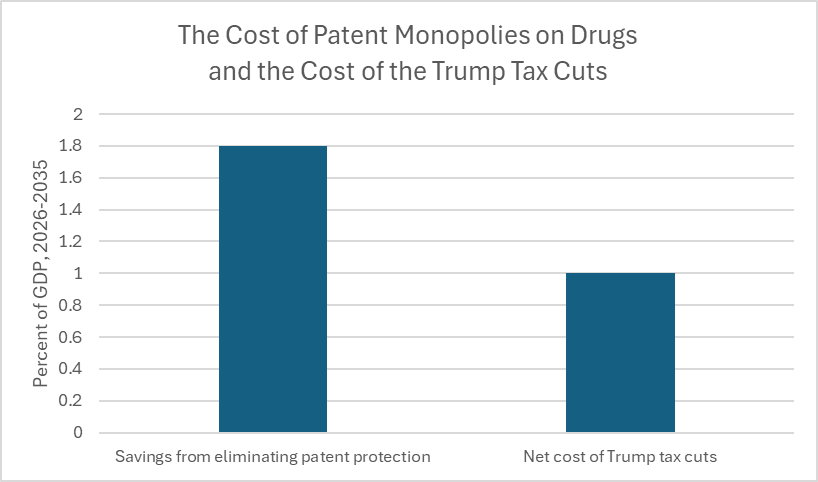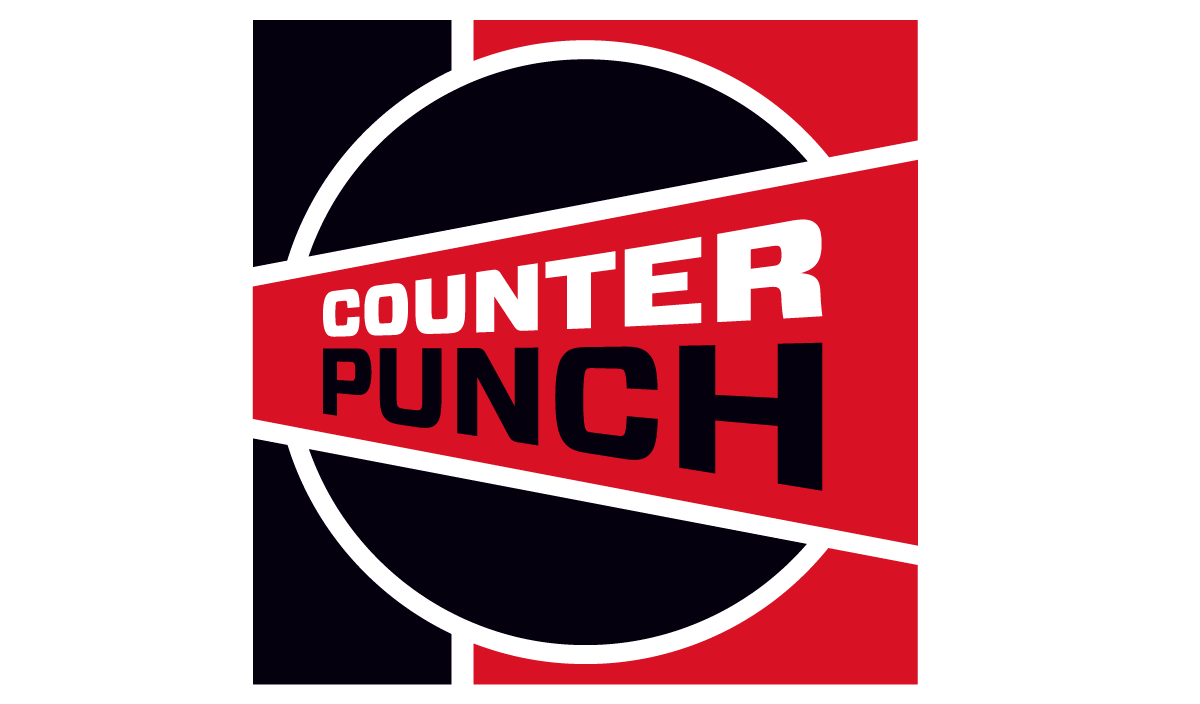Drugs are almost invariably cheap to manufacture and distribute. It would be rare that a drug would sell for more than $30 per prescription without a patent or some other form of protection from the government, and many would sell for just a few dollars, as is the case with older generic drugs.
Yet, there are many drugs that sell for hundreds or even thousands of dollars per prescription. The reason is the government grants the manufacturer a patent monopoly on the drug. This means that the drug faces no competition. The government will fine or even imprison the executives of a company that sought to produce and distribute a drug on which another company holds a patent.
The reason for the patent monopoly is to give drug companies an incentive to innovate and develop new drugs. By selling drugs for ten or even a hundred times their production cost, they can make large profits for the period the patent is in effect. But there are other ways to provide incentives to innovate, which I’ll get back to below, but first it is important to realize how truly awful patent monopolies for drugs are.
The basic point should be evident. Drugs that are necessary for people’s health or even life can be incredibly expensive because of these monopolies. It is not uncommon to hear of someone paying tens or even hundreds of thousands of dollars a year for a cancer drug. If the person doesn’t have good insurance, it is an enormous struggle for all but the richest families to come up with this sort of money. It’s sad and pathetic that we see many people having to resort to GoFundMe drives to pay for the drugs needed to save their life.
Even where people have insurance, it is often a major struggle to get a company to agree to pay for expensive drugs. While most of us have a healthy dislike of insurance companies, the problem here is actually not the insurance company.
If a drug company wants $200,000 for their latest cancer drug, it is reasonable to ask whether the treatment is likely to work and whether it is clearly better than cheaper alternatives. We would not want to be handing a drug company $200,000 for nothing. The approval by multiple doctors or other requirements are appropriate when such big sums are involved.
By contrast, if we lived in a free market world without patent monopolies, there would be no reason to check and recheck a prescription when the cost is a few hundred dollars a year. If a patient’s doctor believed a drug was the best treatment for their patient, there would be no reason for an insurer to challenge that call.
The exorbitant prices also matter on the other side. Patent monopolies not only provide incentives to develop new drugs, they also provide incentives to mislead or even outright lie about the safety and effectiveness of drugs. When a drug company can sell a prescription for a thousand dollars, which costs them ten or fifteen dollars to manufacture and distribute, they have a huge incentive to push their drugs as widely as possible.
This problem occurs all the time. The most notable case was the opioid crisis, where manufacturers claimed that the new generation of opioids were not addictive, even though they knew they were. Hundreds of thousands of people ended up getting hooked on opioids as a result, in many cases ruining their lives and leading to hundreds of thousands of deaths.
While that is an extreme case, pharmaceutical companies make exaggerated claims for drugs all the time. In many cases, their misleading claims lead doctors to prescribe a well-hyped drug when an alternative might be more effective or have fewer side effects. Without the patent monopolies drug companies would have far less incentive to mislead the public about the effectiveness of their drugs.
There is an alternative to patent monopolies for providing incentives. The most obvious one is to justpay people. Most people are willing to work for money, if we pay them to research and develop new drugs, there is every reason in the world to think they will be successful.
This is not just hypothetical. In the years before Donald Trump, the federal government was spending over $50 billion a year on biomedical research, mostly through the National Institutes of Health (NIH). Experts from across the political spectrum felt this was money well-spent. The money has produced hundreds of important breakthroughs in just about every area of medical research.
Most of this funding goes to support basic research, but some drugs were actually developed largely on NIH’s dime, such as AZT (the first effective AIDS drug) and Taxol, a hugely important cancer drug. There seems to be some bizarre cultish reason to think that patent monopolies are uniquely effective in supporting innovation, but we need to base policy on evidence and logic, not cultish thinking. There is no reason to believe that additional public funding, for the explicit purpose of developing drugs and bringing them through the testing and approval process, would not also prove to be very valuable.
Publicly funded research would also have the benefit that the government could require that it be fully open. That would mean that as soon as a lab had any results from an experiment or set of tests they would be posted on the web so that researchers everywhere could benefit from them. This would allow successes to be built on more quickly and would prevent researchers from following paths that others determined to be a dead end.
There also is an enormous amount of money at stake in a switch to free market drugs. This fact is hugely underappreciated even by people involved in policy debates.
We will spend over $700 billion this year on prescription drugs and other pharmaceutical products. If these items were available in a free market, without patent monopolies or related protections, they would likely cost close to $150 billion. This is a rough number but we have a general idea since we know how much drug prices fall when they lose patent protection. The difference of $550 billion is equal to 1.8 percent of GDP.
By comparison, the Congressional Budget Office projects the net cost of Trump’s “One Big Beautiful Bill” at $3.7 trillion over the decade, or 1.0 percent of GDP. It seems everyone agreed that the cost of the Trump tax cut was a big deal.

If the increase in deficit due to the Trump tax cuts is a big deal, then it would seem to reason that the extra costs for prescription drugs due to patent monopolies are a really big deal. Moving to a system of upfront funding and free market drugs would be a difficult process that would need to be planned carefully and phased in gradually, but there is an enormous amount of money at stake, in addition to people’s health. It would be good if anyone paid attention.
This first appeared on Dean Baker’s Beat the Press blog.

